
How to Use dc12 battery: Examples, Pinouts, and Specs
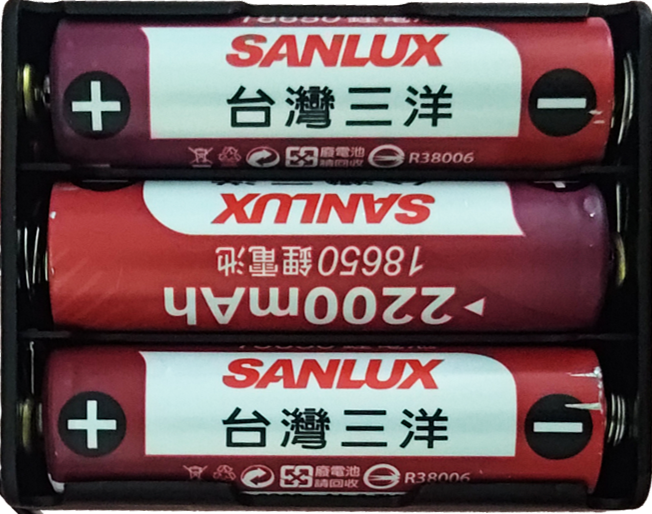
 Design with dc12 battery in Cirkit Designer
Design with dc12 battery in Cirkit DesignerIntroduction
The DC12 Battery (Manufacturer: Sanlux, Part ID: 18650) is a rechargeable battery that provides direct current (DC) electrical energy at a nominal voltage of 12 volts. It is widely used in powering electronic devices, circuits, and systems that require a stable and reliable power source. This battery is compact, efficient, and suitable for portable applications.
Explore Projects Built with dc12 battery
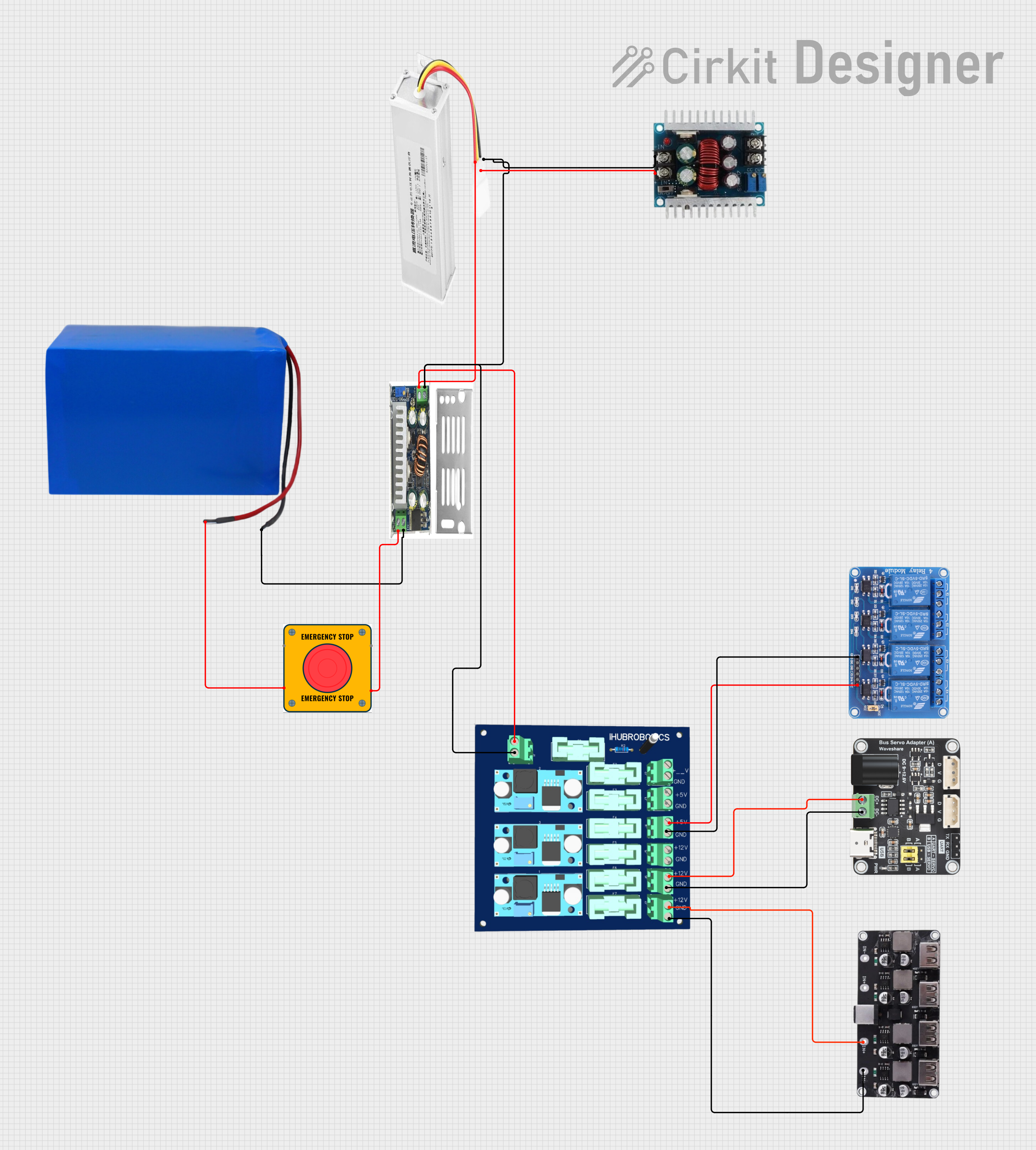
 Open Project in Cirkit Designer
Open Project in Cirkit Designer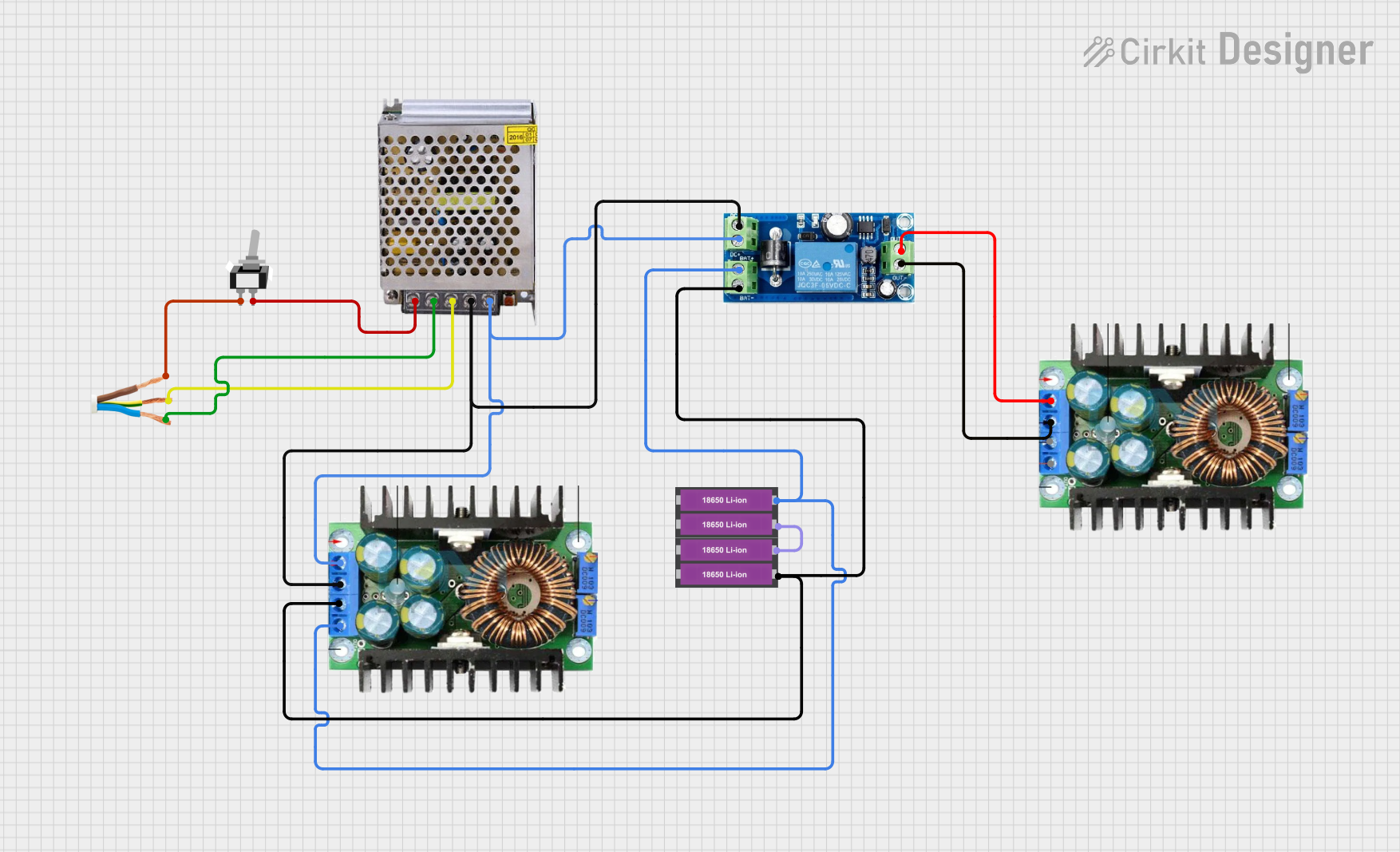
 Open Project in Cirkit Designer
Open Project in Cirkit Designer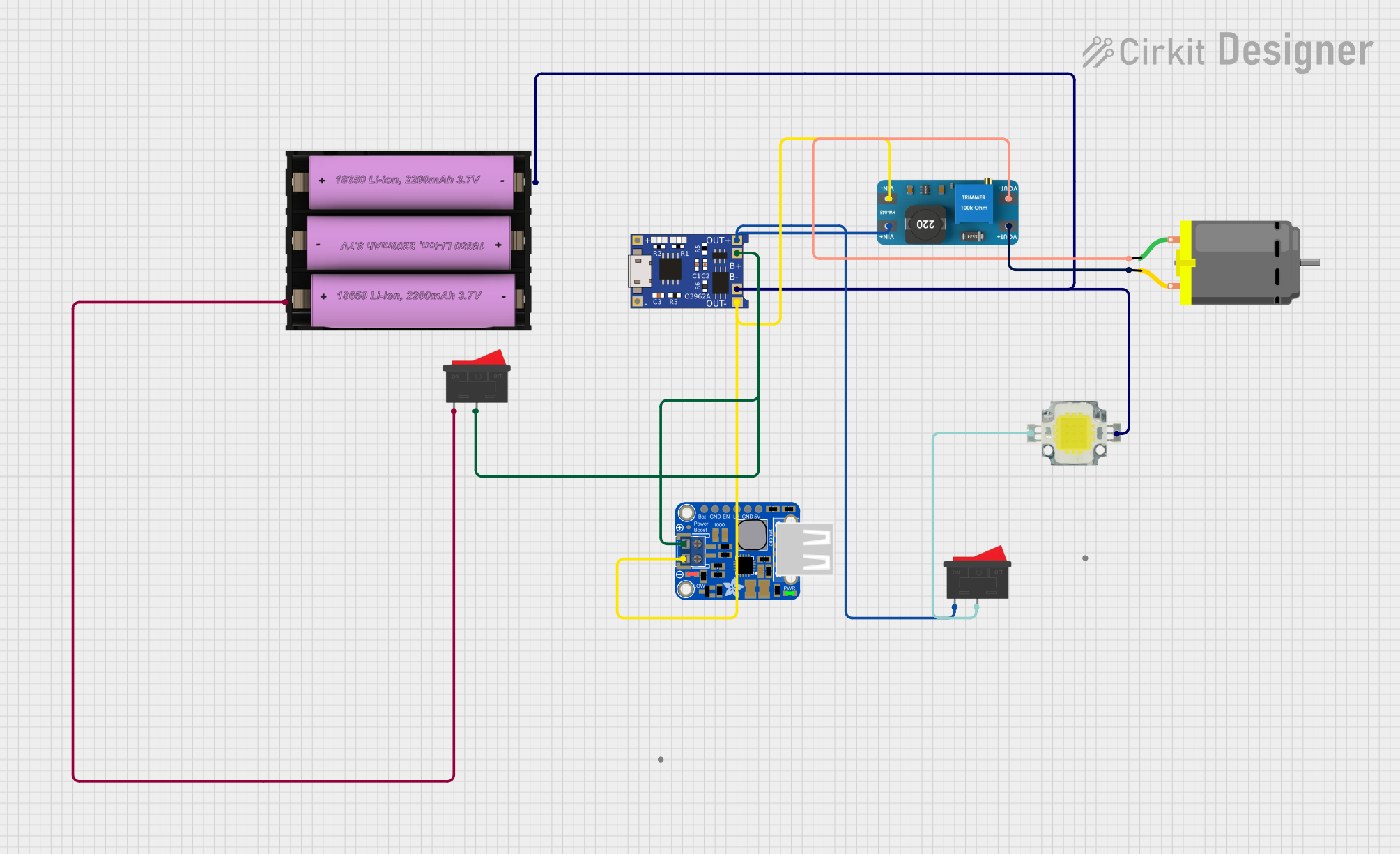
 Open Project in Cirkit Designer
Open Project in Cirkit Designer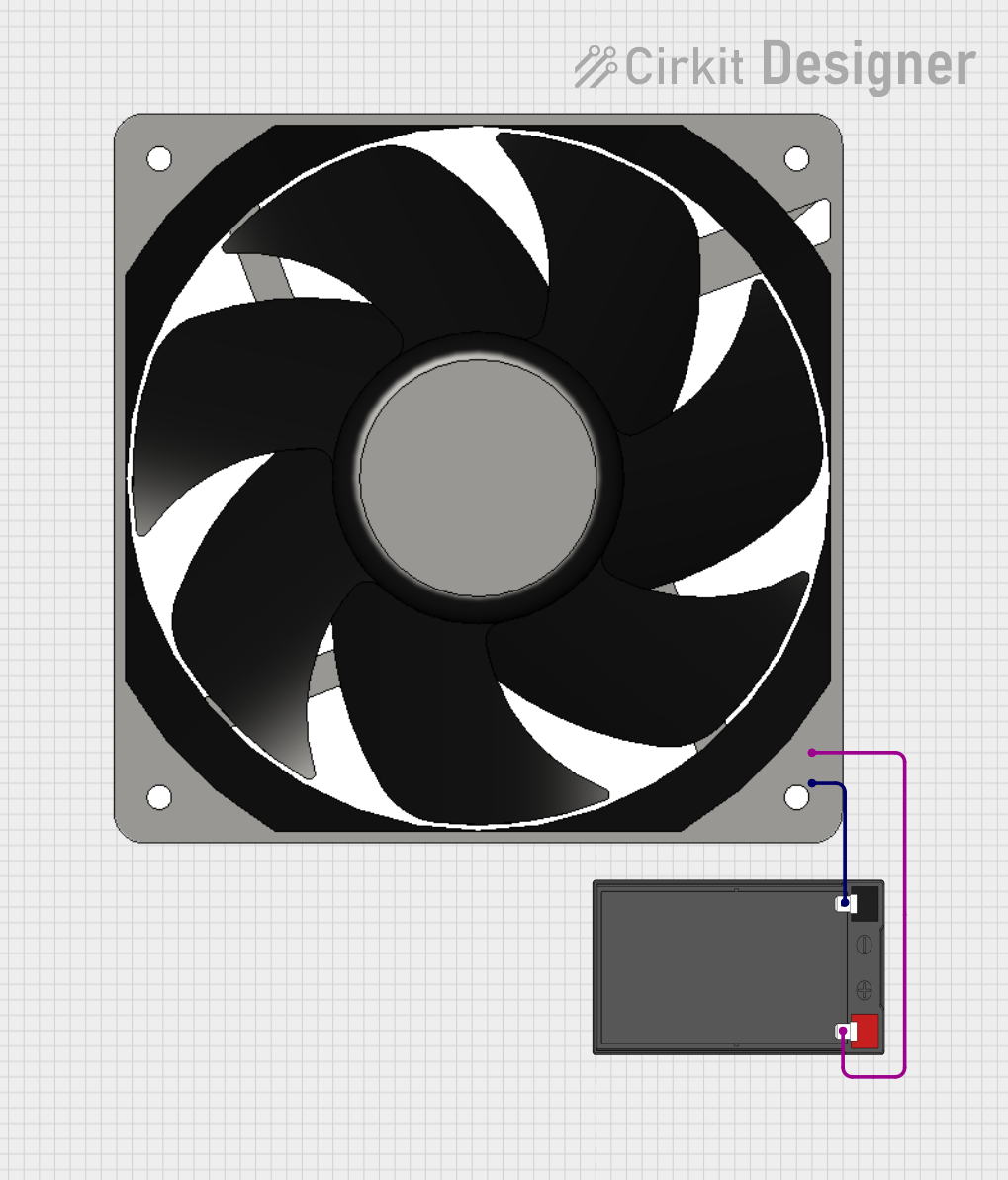
 Open Project in Cirkit Designer
Open Project in Cirkit DesignerExplore Projects Built with dc12 battery

 Open Project in Cirkit Designer
Open Project in Cirkit Designer
 Open Project in Cirkit Designer
Open Project in Cirkit Designer
 Open Project in Cirkit Designer
Open Project in Cirkit Designer
 Open Project in Cirkit Designer
Open Project in Cirkit DesignerCommon Applications and Use Cases
- Powering small electronic devices such as LED lights, fans, and portable tools.
- Backup power for microcontroller-based systems (e.g., Arduino projects).
- Energy storage for solar-powered systems.
- Robotics and remote-controlled devices.
- Emergency lighting systems.
Technical Specifications
The following table outlines the key technical details of the Sanlux DC12 Battery (18650):
| Parameter | Value |
|---|---|
| Nominal Voltage | 12V |
| Capacity | 2000mAh (varies by model) |
| Chemistry | Lithium-ion |
| Maximum Discharge Current | 2A |
| Charging Voltage | 12.6V |
| Charging Current | 1A (recommended) |
| Operating Temperature | -20°C to 60°C |
| Dimensions | 65mm x 18mm (per cell) |
| Weight | ~45g (per cell) |
Pin Configuration and Descriptions
The DC12 Battery typically has two terminals for connection:
| Pin | Label | Description |
|---|---|---|
| 1 | + (Positive) | Positive terminal for power output. Connect to the load's positive input. |
| 2 | - (Negative) | Negative terminal for power output. Connect to the load's ground or negative input. |
Usage Instructions
How to Use the Component in a Circuit
- Connection:
- Connect the positive terminal (
+) of the battery to the positive input of your circuit. - Connect the negative terminal (
-) to the ground or negative input of your circuit.
- Connect the positive terminal (
- Charging:
- Use a compatible lithium-ion battery charger with a charging voltage of 12.6V and a current of 1A.
- Ensure the charger has overcharge protection to prevent damage to the battery.
- Load Considerations:
- Ensure the connected load does not exceed the maximum discharge current of 2A.
- Use a fuse or current-limiting resistor if necessary to protect the battery and circuit.
Important Considerations and Best Practices
- Avoid Overcharging: Overcharging can damage the battery and reduce its lifespan. Always use a charger with built-in overcharge protection.
- Prevent Deep Discharge: Do not allow the battery voltage to drop below 10.8V, as this can permanently damage the cells.
- Temperature Management: Avoid exposing the battery to extreme temperatures. Operate within the specified range of -20°C to 60°C.
- Storage: Store the battery in a cool, dry place when not in use. Charge the battery to about 50% capacity before long-term storage.
- Safety: Do not short-circuit the terminals, puncture, or expose the battery to fire.
Example: Using the DC12 Battery with an Arduino UNO
Below is an example of how to connect the DC12 Battery to an Arduino UNO to power an LED:
Circuit Diagram
- Connect the positive terminal of the battery to the Arduino's
Vinpin. - Connect the negative terminal of the battery to the Arduino's
GNDpin.
Arduino Code
// This code blinks an LED connected to pin 13 of the Arduino UNO.
// Ensure the DC12 battery is connected to the Arduino's Vin and GND pins.
void setup() {
pinMode(13, OUTPUT); // Set pin 13 as an output pin
}
void loop() {
digitalWrite(13, HIGH); // Turn the LED on
delay(1000); // Wait for 1 second
digitalWrite(13, LOW); // Turn the LED off
delay(1000); // Wait for 1 second
}
Troubleshooting and FAQs
Common Issues Users Might Face
Battery Not Charging:
- Cause: Faulty charger or over-discharged battery.
- Solution: Check the charger output voltage and current. If the battery voltage is too low, use a specialized charger with a recovery mode.
Battery Drains Quickly:
- Cause: High current draw or degraded battery capacity.
- Solution: Ensure the load does not exceed the maximum discharge current. Replace the battery if it has reached the end of its lifespan.
Device Does Not Power On:
- Cause: Incorrect wiring or insufficient voltage.
- Solution: Verify the connections and ensure the battery is fully charged.
Battery Overheats During Use:
- Cause: Excessive current draw or environmental conditions.
- Solution: Reduce the load or operate the battery within the specified temperature range.
Solutions and Tips for Troubleshooting
- Use a multimeter to measure the battery voltage and ensure it is within the expected range.
- Inspect all connections for loose wires or corrosion.
- If the battery is not performing as expected, check for signs of physical damage or swelling, and replace it if necessary.
By following this documentation, users can safely and effectively utilize the Sanlux DC12 Battery (18650) in their projects and applications.